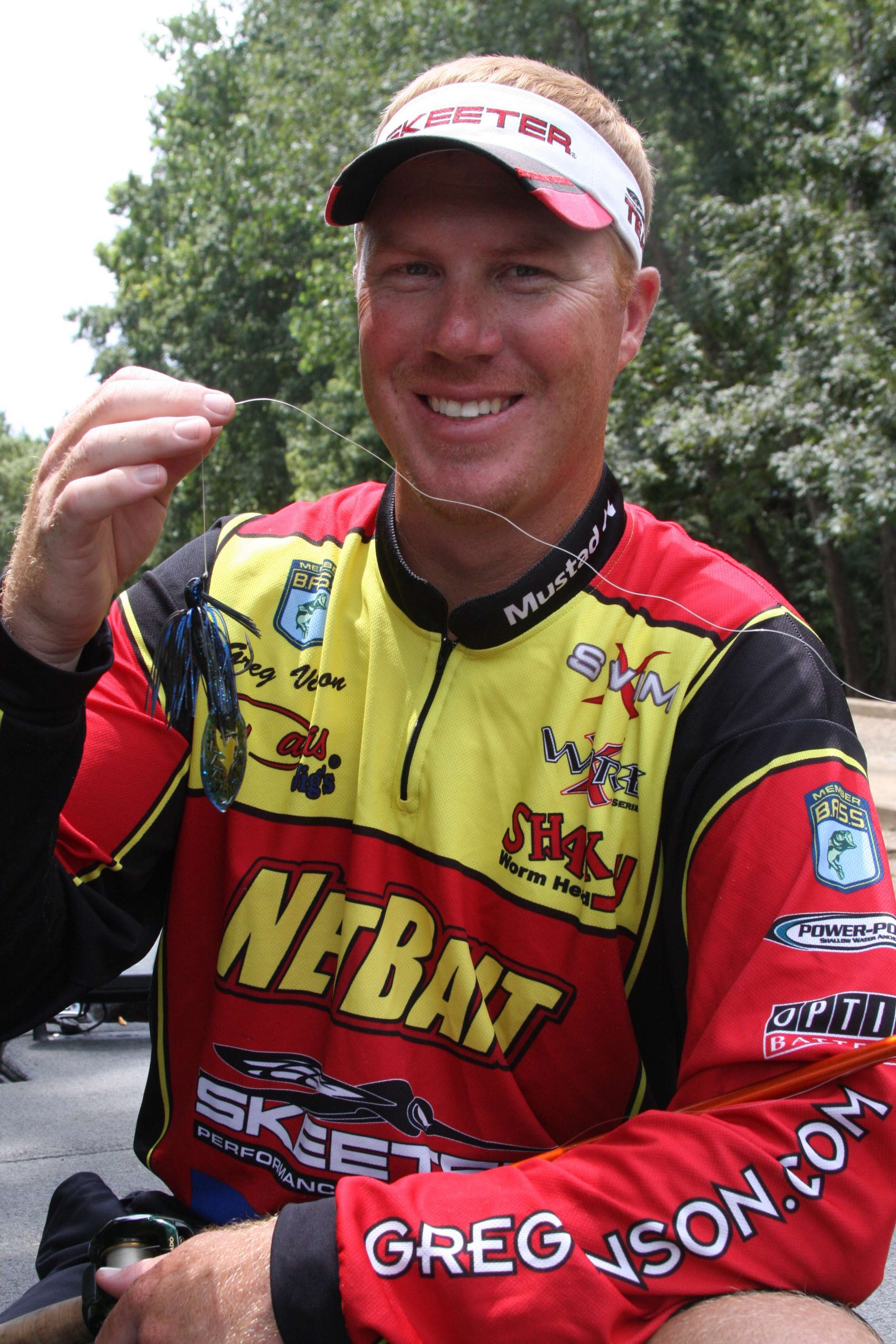
Greg Vinson is one of the young guns in the Bassmaster Elite Series. He's made his mark in three short years, qualifying for both the 2011 and 2012 Bassmaster Classics. When fall rolls around and water temperatures dip into the low 70s, Vinson reaches for a swim jig and heads for the flats.
Give his favorite fall pattern a try. Here are the particulars:
Season
Fall
Water conditions
Water temperature: 70-76 degrees
Water color: Slightly stained — 12-18 inches visibility
Wind/current: A little wind helps this pattern. Wind breaks up the surface and keeps the fish active.
Structure/cover
Structure: Flats with little contour change. Small depressions or drains are good. Key on the areas with a 1-2-foot change in depth.
Cover: Water willow ("bank grass") or any other shallow vegetation can be good, especially lily pad stems. Isolated wood is also good.
Depth: 2-4 feet
Tackle
Lure: Netbait Paca Swim Jig (white) with Kickin' B Chunk (white). Bass are keying on shad now, especially in the morning. As the day progresses, Vinson may transition to a Hardy Craw skirt (black, brown and green) with a green pumpkin trailer or even black and blue. Trim the weedguard two ways to increase your hook-ups but still keep it relatively snag-free. First, completely cut off some strands (up to half) if you're fishing in light cover. Second, angle the end of the weedguard to make it more streamlined. Keep just a few strands long enough to brush the hook point when compressed.
Rod: 7 1/2-foot E21 Carrot Stix Wild heavy action casting rod.
Reel: Shimano Curado 200 G with a 7.0:1 gear ratio.
Line: 40-pound braid.
Presentation
Cast/Flip/Pitch: When working vegetation, long casts are best. You want to cover lots of water and get back in the grass as far as you reasonably can. When fishing wood, shorter, more precise casts (or pitches) are better.
Retrieve: Cast past your target and bring the jig up to the strike zone. When it reaches the area where you expect a bass to be, slow the retrieve down and let the bait hang in the vegetation just a little before shaking it free. This often triggers a strike. If you're fishing wood, bounce the jig through the limbs or stumps, pausing it near the cover before shaking it past. Experiment with the cadence of your retrieve until you find what the bass want that day. Vinson likes to impart erratic rod tip action, giving the jig a hop, skip and jump before killing it near cover.
Keys to success
Strikes with the swim jig can be violent and sudden, causing anglers to miss fish or get poor hooksets. To increase your hook-up percentage, keep your rod at the 10 o'clock position throughout the retrieve. When you get a strike, drop the tip before coming back … hard! If you see the strike — which happens a lot with this pattern — make sure you feel the fish before setting the hook.





